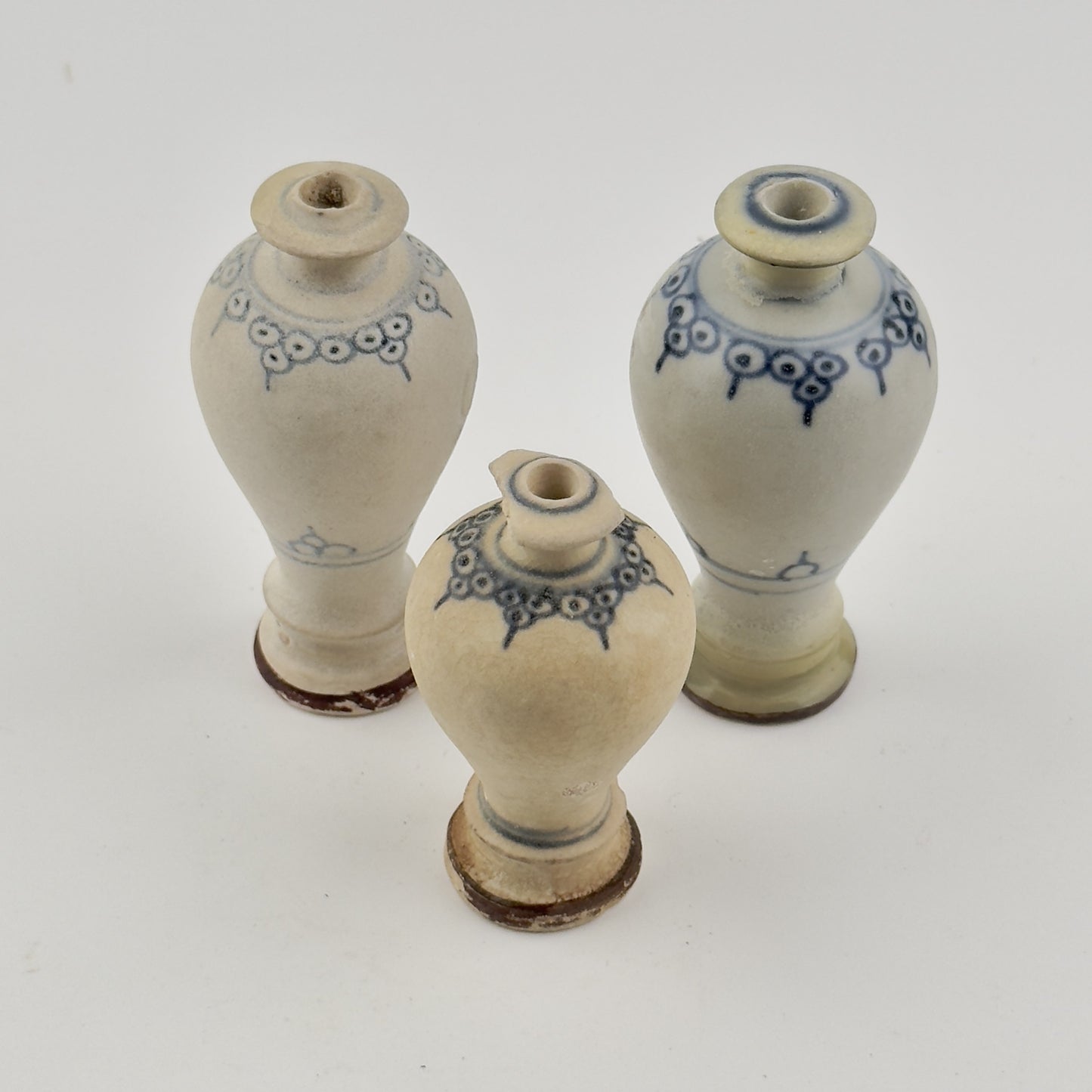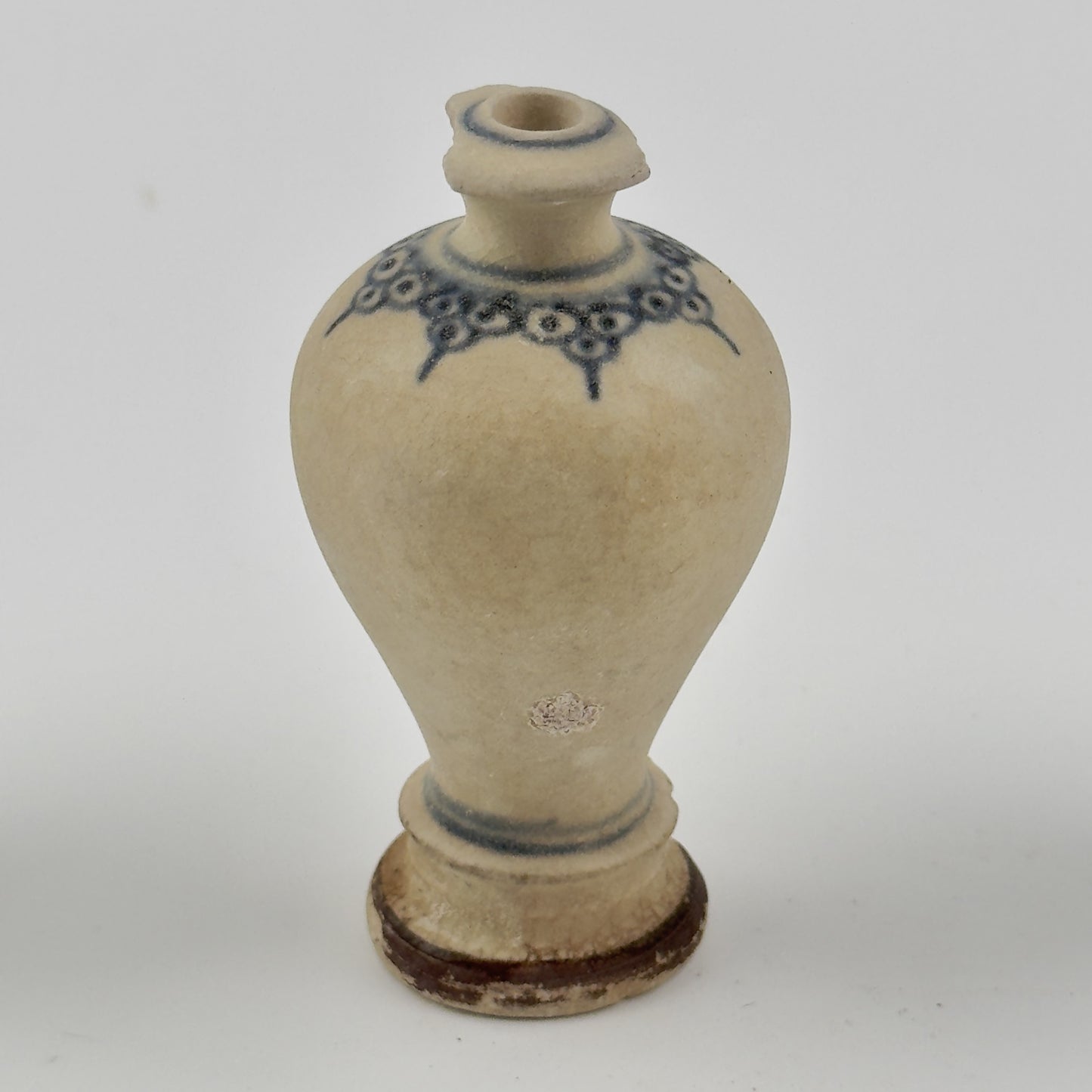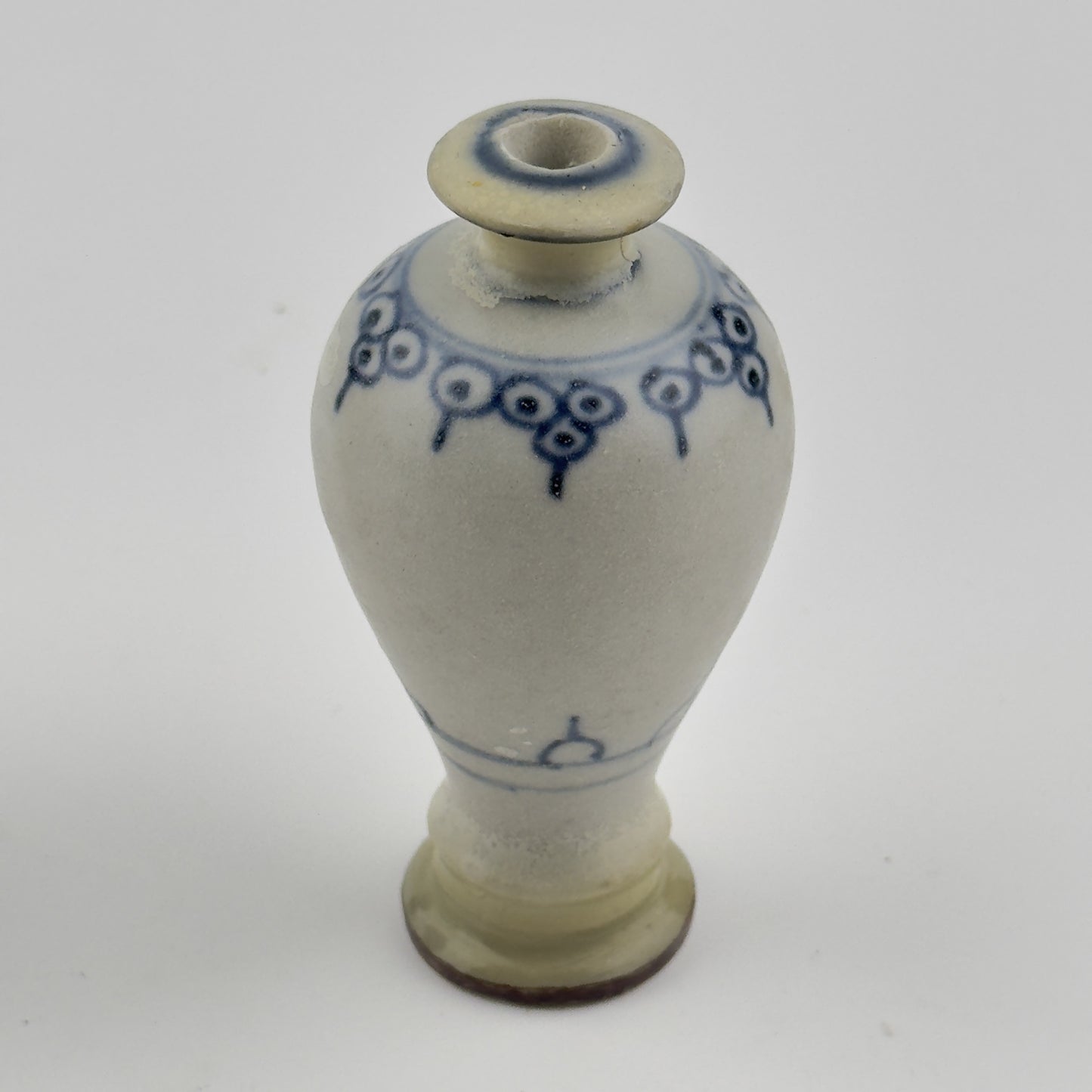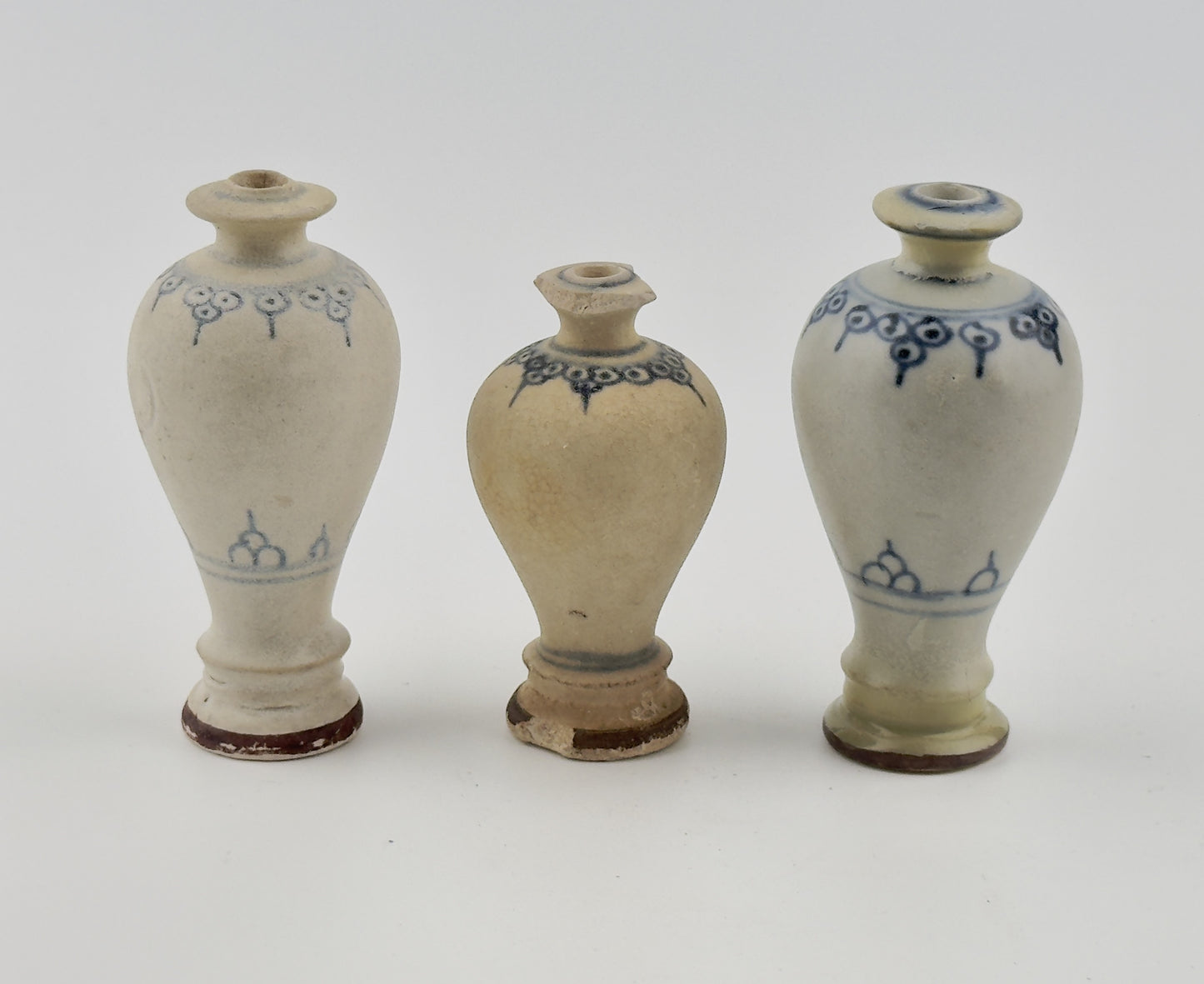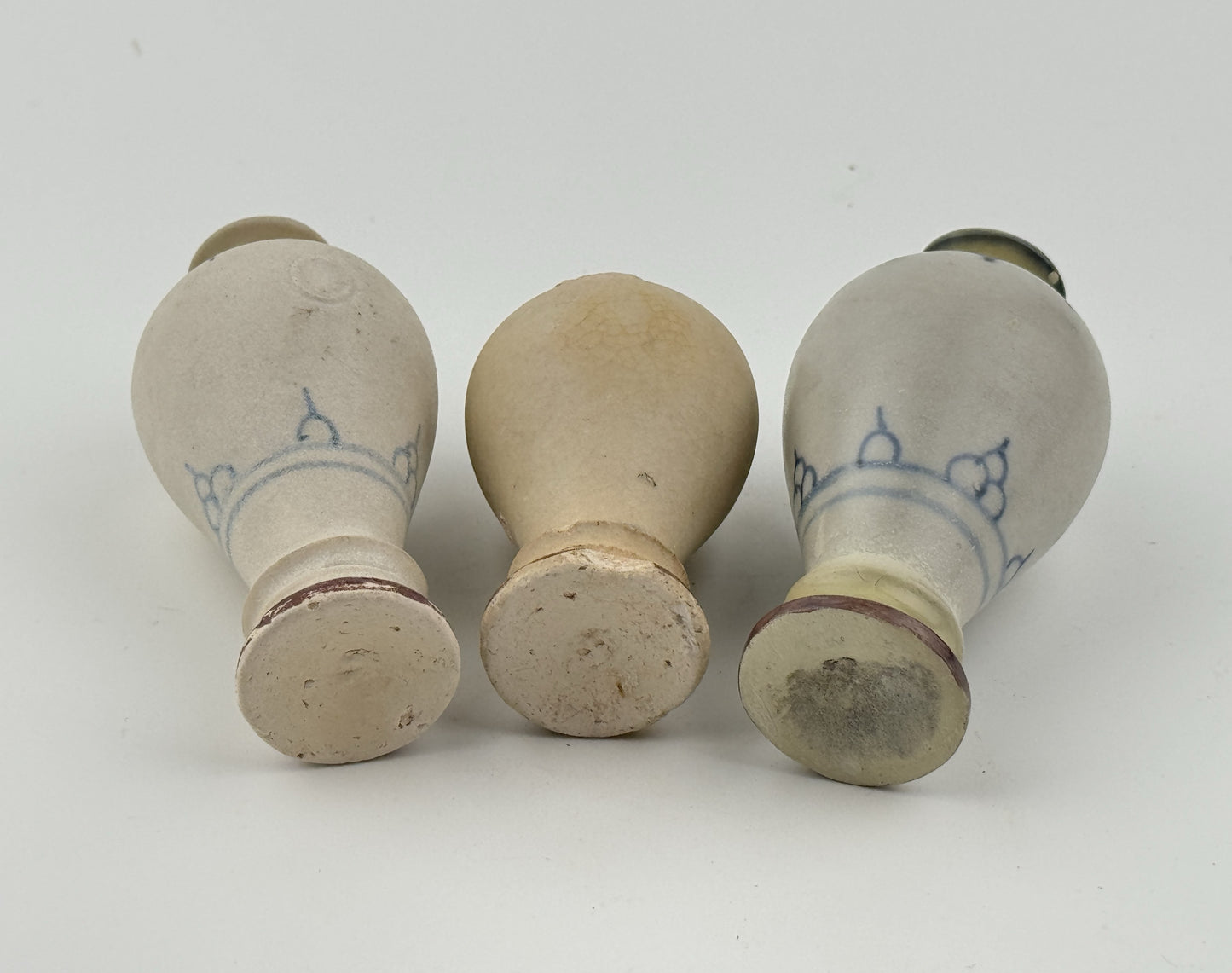Three Annamese Stoneware Miniature Jarlets, 15th Century, Le Dynasty
Three Annamese Stoneware Miniature Jarlets, 15th Century, Le Dynasty
Couldn't load pickup availability
In the shape of a tower(Chess) with blue decoration on the body, chocolate ring on the base.
Dates : 15th century Le Dynasty
Region : North Annam(Vietnam)
Type : Jarlet(Grey-blue underglaze)
Origin : Annam (Vietnam), recovered presumably from the Hoi An ship
Dimension : Left to Right - 8.5cm(Height) x 3.5cm(Diameter) / 6.5cm(Height) x 4cm(Diameter) / 8.5cm(Height) x 4cm(Diameter)
Condition : Good(The mouth of the jarlet at the center is partially damaged, and there is a chip on the body)
Reference : Double checked with reference to the original catalogue
1) Butterfield Treasures Hoi An Hoard Auction Catalogs / San Francisco Butterfields 2000
2) Asian Ceramic Found along Maritime Silk Route / National Maritime Museum of Korea
3) Vietnamese Ceramics Miniatures / Catalogue of the exhibition in Zurich Sep 1989 Switzerland (Collection of Ulrich J. Beck)
4) Art Institute of Chicago - Reference Number 2006.10
(Type : Closely related)
https://www.artic.edu/artworks/186458/miniature-pear-shaped-yuhuchun-bottle
* Vietnamese trade ceramics
Around the mid-14th century, Vietnam developed its ceramics production technology by producing blue and white porcelain, and began to export it overseas. During this period, China Ming Dynasty implemented a policy of lifting the ban from 1371 to 1657 and restricted foreign trade. This served as a good opportunity in the trade history of Vietnamese ceramics, and ceramic exports boomed from the late 15th to the 16th century, expanding sales channels not only to Southeast Asia but also to Japan, the Middle East, and several European countries.
During 15~16th century, Vietnam's international trade policy became much more liberal than in the past. In northern Vietnam, commerce became more active as markets were formed around ports, riverine ports, and handicraft villages. This led to the emergence of many large commercial centers such as Phố Hiến, Thăng Long and Hội An.
Through this, Vietnam's international trade and economy also grew significantly. In the above commercial area, stores of European merchants from the Netherlands, England, France, and Portugal were opened and operated. Merchants from many countries around the world entered Vietnam and engaged in intermediate trade.


